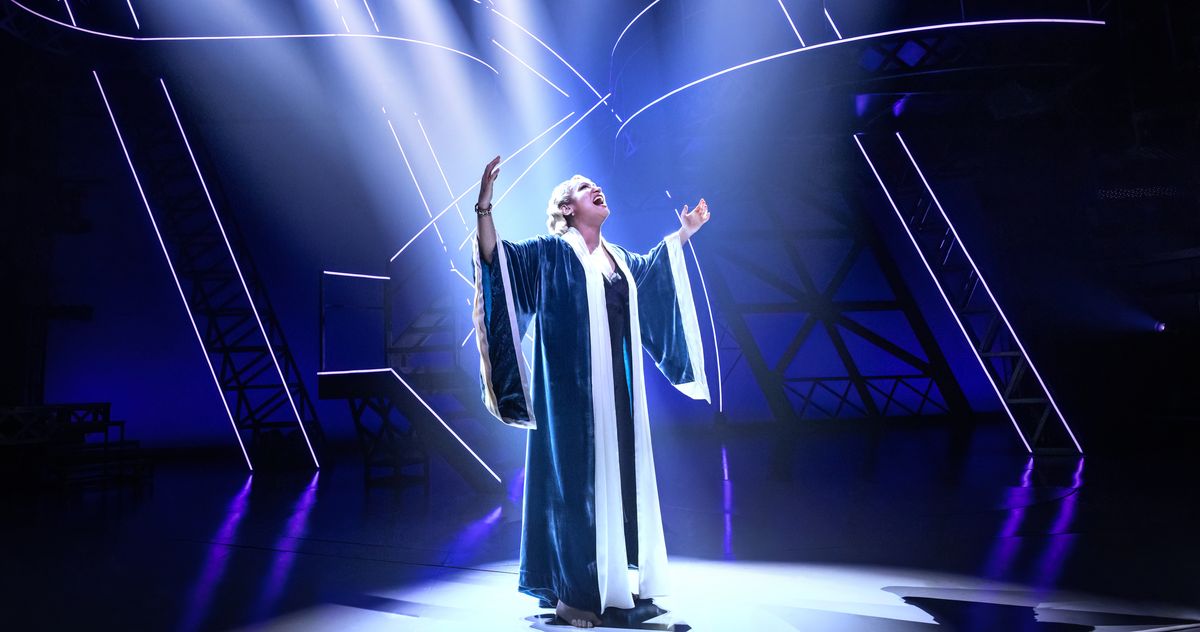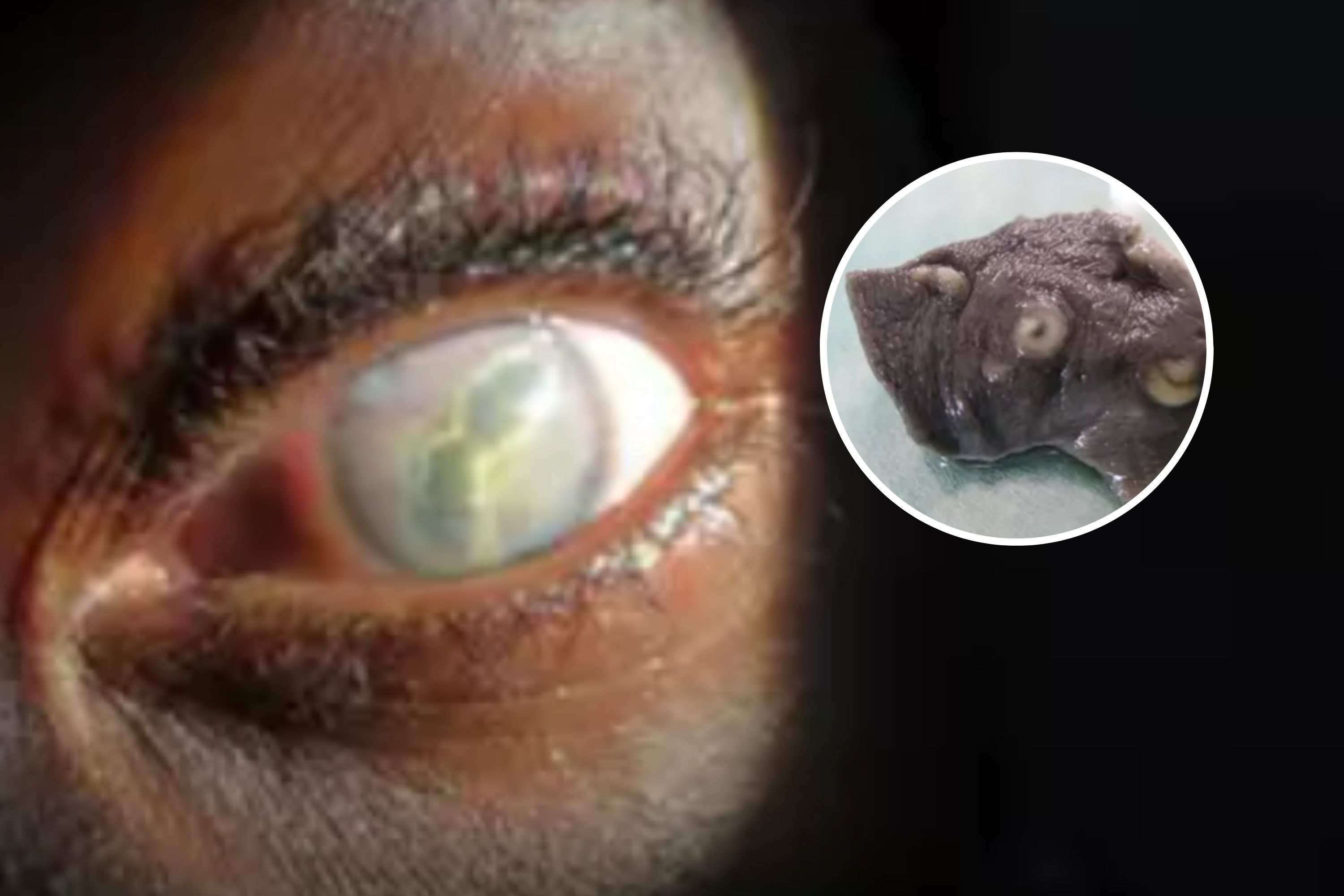Eden Espinosa as Tamara de Lempicka.
Photograph: Matthew Murphy and Evan Zimmerman
I am politely requesting a moratorium on musicals that start off with some version of “How did I wind up listed here?” Probably we’ve all compensated a very little bit as well a great deal awareness to Jean-Luc Godard’s most Instagram-quotable epigram: At this position, putting the starting, center, and stop in that purchase feels like a vaguely radical act. The irony is that Lempicka—Carson Kreitzer and Matt Gould’s new musical about the tempestuous life of the Polish émigré Artwork Deco painter Tamara de Lempicka, which begins with the aged artist on the lookout environment-wearily back—is obsessed with radical functions. It terribly needs to be daring, but as any high-university kid can convey to you, there is no surer route to awkwardness than hoping far too hard. Lempicka the lady was unquestionably intriguing, flawed, and wonderful Lempicka the musical typically goes flat. There is an uncharacteristically tepid good quality to Rachel Chavkin’s direction—as if she’s repeating herself alternatively than taking pleasure in herself—along with a perception of varnish above the proceedings. We can see the shiny, neat surface area, the assertive industrial traces and curves of the painter’s do the job, but we’re lacking its real audaciousness, voluptuousness, and vitality. The display pushes and poses — it does not enable us in.
There is often the possibility that a bio-engage in, even of the most intriguing topic, is heading to absence an engine, a reason for being moreover strolling us by means of historical situations. Even though which is not quite the case here, the motor that Kreitzer (e book, lyrics, and initial idea) and Gould (e book and songs) have decided on tends to get flooded, possibly with outpourings of generalized emotion or with preciousness. We’re pursuing the self-creation of an artist and of a woman—from innocent 18-calendar year-outdated bride to glamorous bisexual artwork-environment superstar—but her huge moments of revelation never ever sense quite as profound as they’re intended to. “Plane, lines, type,” sings Lempicka (Eden Espinosa) in a repeating motif in the course of the demonstrate. “Plane, color, light.” It is nuts to throw you into this sort of shut comparison with Stephen Sondheim whereas Sunday in the Park With George’s “Color and Light” feels like a musical expression of its very own title, entire of sparkle and humor woven by its depiction of the innovative course of action, Lempicka’s paeans to art-producing drone with self-seriousness. They are all a minor also earnest and apparent: “A portray is … system and layout / often structure / every minute designed.” Likewise, when the painter first places her muse, a gorgeous prostitute named Rafaela (the radiant Amber Iman, who’s going deep while so a great deal about her stays vapid), Lempicka sings, enraptured: “If I ever see her all over again, I will speak / ask her name, talk to her back again to my rooms / she will just take off her garments, lie down, and I will / paint her.” Nicely, certainly.
Gould’s new music spends a great deal of time inflammation, and Espinosa spends a whole lot of time belting, nonetheless beneath the undulating surface there’s a deficiency of poetry to Lempicka. Its protagonist is ravished by elegance, sings about it, longs to paint it, but elegance seldom crosses the footlights to pierce us in the coronary heart. Aesthetically, the most striking thing about the manufacturing is Riccardo Hernández’s towering established, all angles and stairs and curving metal — element Deco, section Constructivism, element riff on the geometry of the Eiffel Tower. When slender bars of gentle illuminate its railings, sliding up and down its aggressive traces, it is genuinely exciting—Harold and the Purple Crayon writ huge for the equipment age—and when Peter Nigrini’s projections fill the set’s unfavorable areas with photos of Lempicka’s genuine paintings, then we get a flavor of awe. It is fleeting, nevertheless. Within Hernández’s imposing architecture, Paloma Young’s costumes seem to be weirdly 50 percent-baked, caught someplace involving abstract gesture and substantial glamor and at the middle of the entire apparatus, Espinosa hits the significant notes loud, but she continues to be, as a character, unvaried and opaque. It is not that Chavkin, Kreitzer, and Gould want to idealize or idolize Lempicka, but they do opt for the tritest way of fleshing her out. “Have you ever liked somebody, extra than lifestyle itself?” The painter, age 77, asks us at the begin of the show. Politics will swirl violently about Lempicka, but this tale will be about appreciate.
If which is the circumstance, then we’d far better get the potency of these epic like affairs — and only 1 of them’s obtained any juice. Lempicka would have us consider that its heroine certainly liked both of those her partner, Tadeusz Lempicki (Andrew Samonsky)—whom she really did rescue right after he was imprisoned by the Bolshevik key police—and her great muse, Rafaela. (We know subsequent to practically nothing about the serious Rafaela, apart from that, following assembly her, the genuine Lempicka painted her 7 instances in the class of one particular 12 months, and the paintings are indisputably pretty as hell.) Iman brings poise, relieve, and emotional heft to Rafaela her voice is sultry and magnificent and—as Lempicka gains both equally fame and disgrace around her sex-worker girlfriend—Iman’s bitter heartbreak results in being the most influencing thing in the exhibit. (Closely seconded by the superb Beth Leavel’s eleventh-hour solo as the Baroness, spouse to Nathaniel Stampley’s kindly Baron Kuffner, a patron who will ultimately become Lempicka’s 2nd husband.) Samonsky’s Tadeusz simply cannot contend. He will come off as a clear-cut sq. (“I really do not want a New Lady / I want / the girl who’s Mine”) and a mope. He does not adore the actuality that his wife throws herself into function as a painter when they land in Paris as young refugees, but it usually takes him a long time of woe-is-me-ing on their couch prior to he will get a position himself. When he and Rafaela at some point fulfill at Lempicka’s first solo exhibit and sing a crisp duet to each other (“I can see what she sees / in you”), we only feel 1 of them.
In the meantime, we hardly ever get to obtain out substantially of what Lempicka thinks of anything at all but her fans and her function. Characterizing her as another person whose “real art” was “how to endure,” Kreitzer and Gould appear to be to be trying to sidestep much more a complex engagement with the thoughts and compromises of residing by means of the two the Russian Revolution and the increase of fascism in Europe — and dwelling by means of all of this as, if not normally someone with dollars, then certainly an aristocrat by relationship, aspiration, and state of mind. It’s particularly odd, provided the defiant socialist vibes of Hadestown, also directed by Chavkin and nevertheless managing appropriate across the street from Lempicka, how simplistically “the revolution” is depicted below. Plenty of furrowed brows, elevated arms, and militant sashaying, while Lempicka, continue to in ingénue mode, has to give her virtue to a leering commandant (George Abud) in get to extricate Tadeusz. At minimum Abud will get to come again later on as the founder of Futurism, Filippo Tommaso Marinetti, in what is definitely the show’s most entertaining effectiveness. Marinetti was a nutball in serious lifetime: How can you not have a small space for a person who—even although driving complete-hog into fascism—was so devoted to composing manifestos that he actually created a Futurist cookbook, in which he ranted about how pasta tends to make you “heavy, brutish… skeptical, gradual, pessimistic,” and fills you with a “black hole” of “incurable sadness”?
Abud’s Mephistophelean Marinetti immediately becomes—perhaps a little bit far too transparently in conditions of the script—the Che to Lempicka’s Evita. 1st, as her instructor at the Académie des Beaux-Arts, he provides her her greatest lesson (serious, but in fact presented to her at the Académie Ranson by the artist Maurice Denis): “A portray is not a woman. Or a warhorse. Or a landscape. A portray is a flat surface area, protected with paint … We do not handle the globe. We regulate 1 flat rectangle of canvas. At a time.” Then, he leaps out of the stage’s body to chronicle her increase with the cynical, devilish eye of an additional 1930s emcee who’s also at present just a several blocks away. “Perfection”—Marinetti’s zealous ode to the glories of “speed / and metal / flame-spitting motor of the automobile”—lets Abud flaunt and revel as if he’s providing a Futurist “One Night in Bangkok” and his most Cabaret–esque selection, “Pari Will Often Be Pari,” is a wily 2nd-act opener, spiked with awful irony: “There’s a fireplace in the Reichstag in Germany / C’est dommage, une tragedie / But that will not have an affect on us below in Pari.”
Potentially the serious letdown of Lempicka is that, although there are sparks of exuberance in the demonstrate, they do not arrive from its middle. Lempicka herself, in this article, lacks vibrancy and wit we hardly ever get a actual perception of the magnetism that need to have encircled her like one particular of her lavish fur stoles. A painting may well rightly be only a canvas included with paint and a engage in just a box full of bodies and objects and lights and appears, but the level is the miraculous depths that can be touched by consciously acknowledging, crafting, and then transcending the artifice. “Who can display me / Anything I’ve hardly ever found?” growls Marinetti. Lempicka aspires, even strains, but never very generates speculate. Art—especially artwork explicitly about art—isn’t straightforward.
Lempicka is at the Longacre Theatre.










